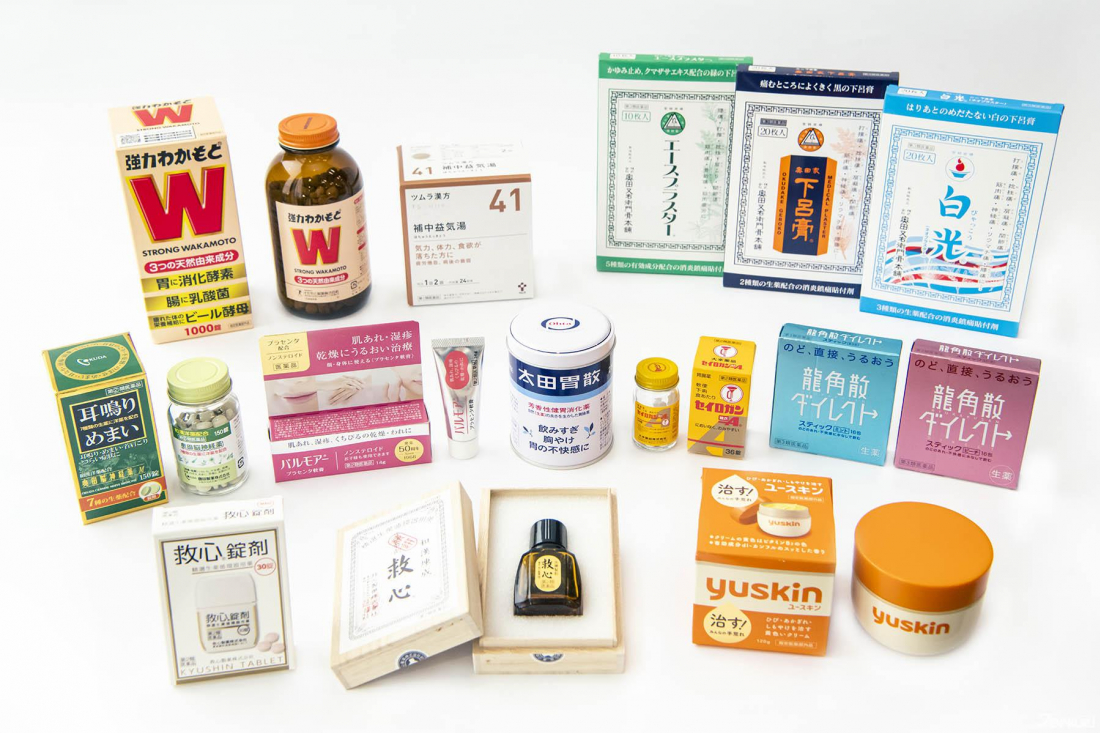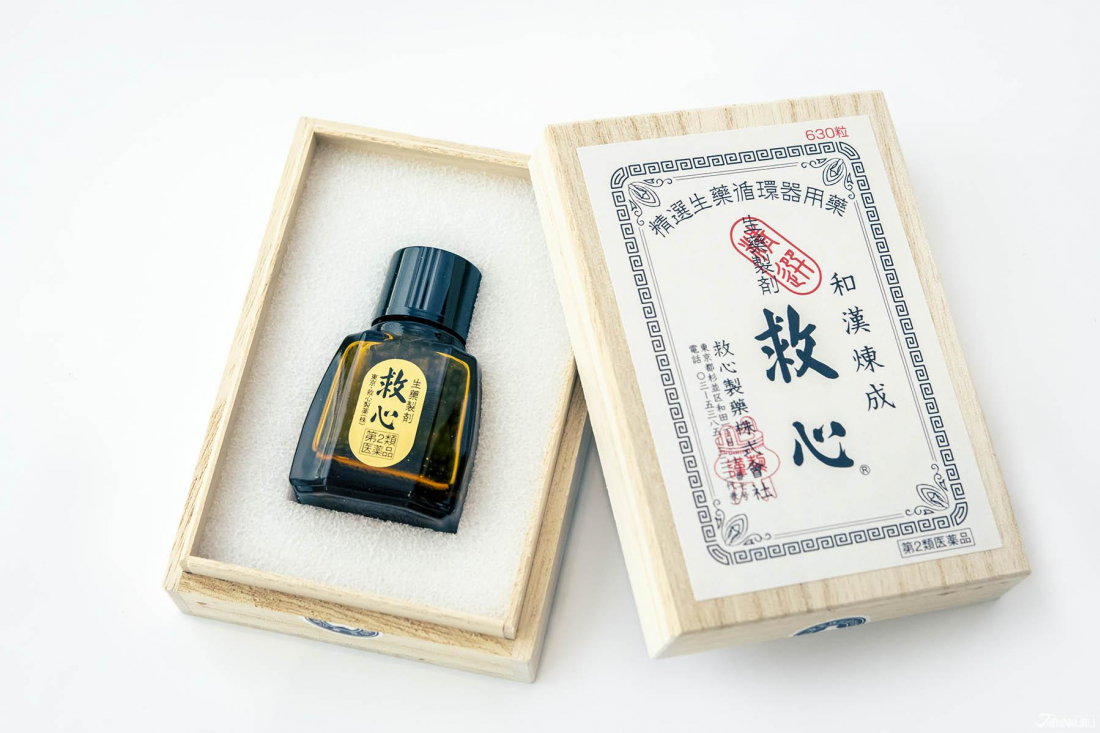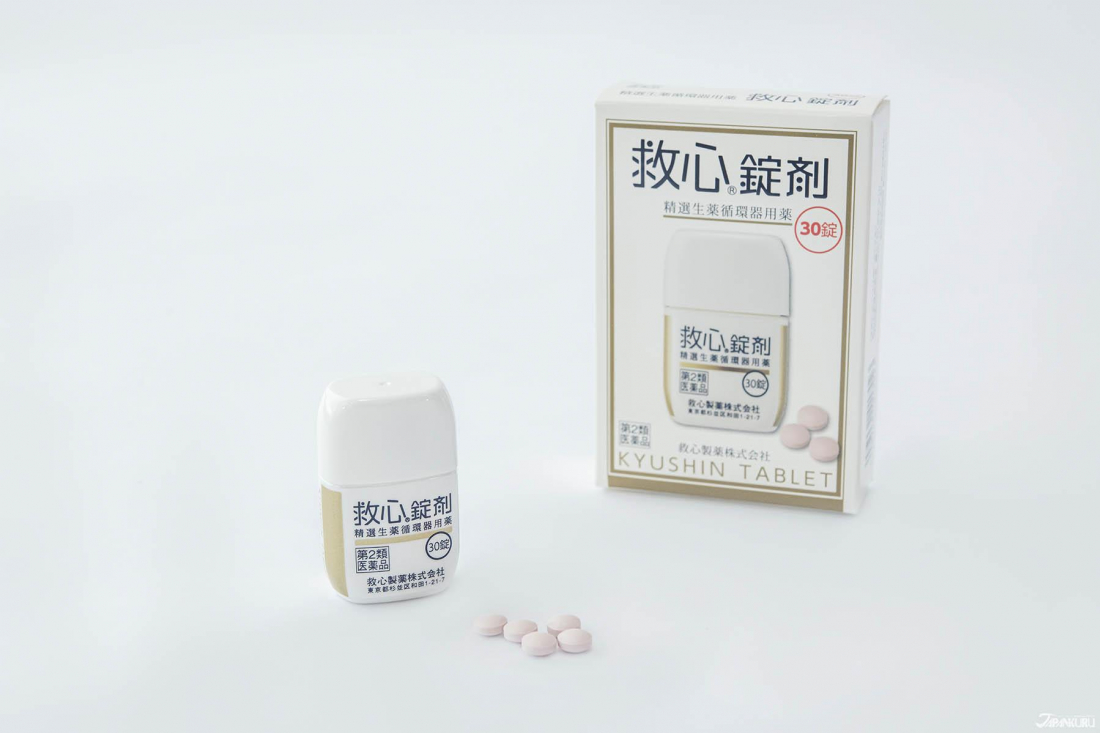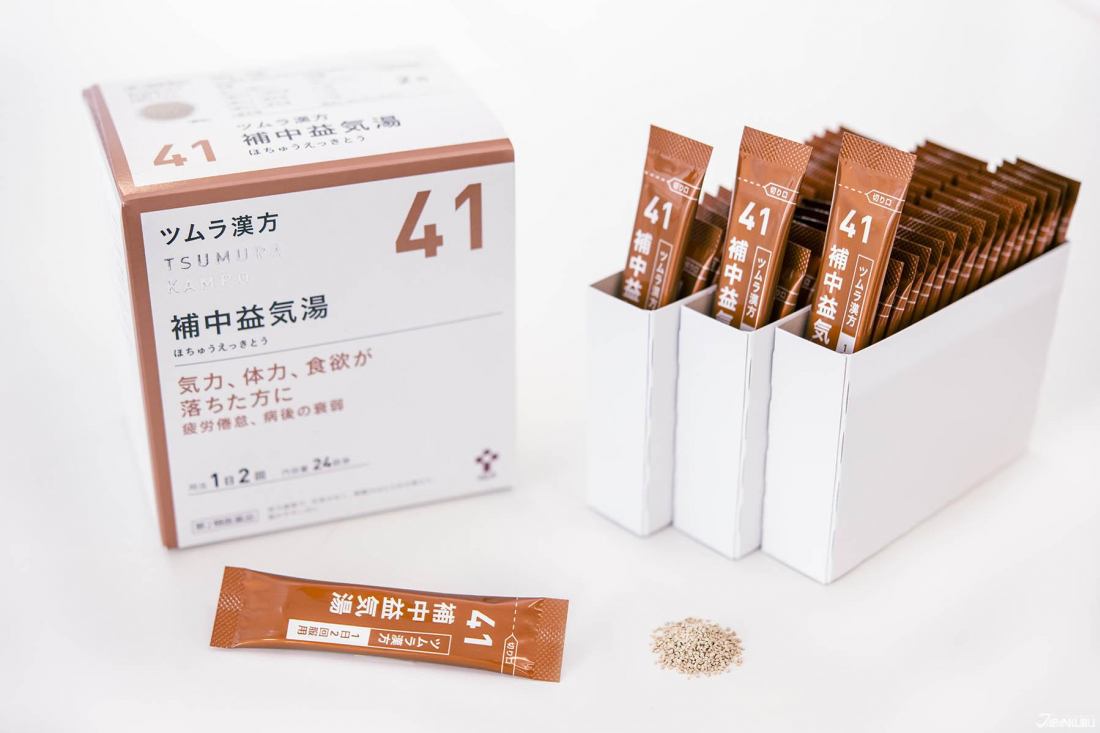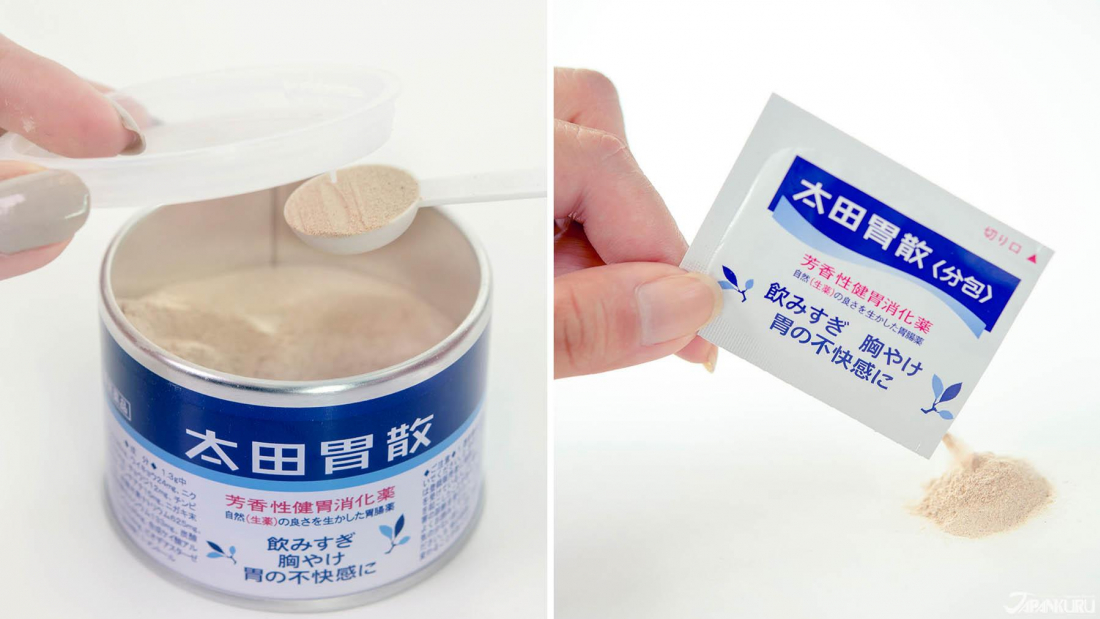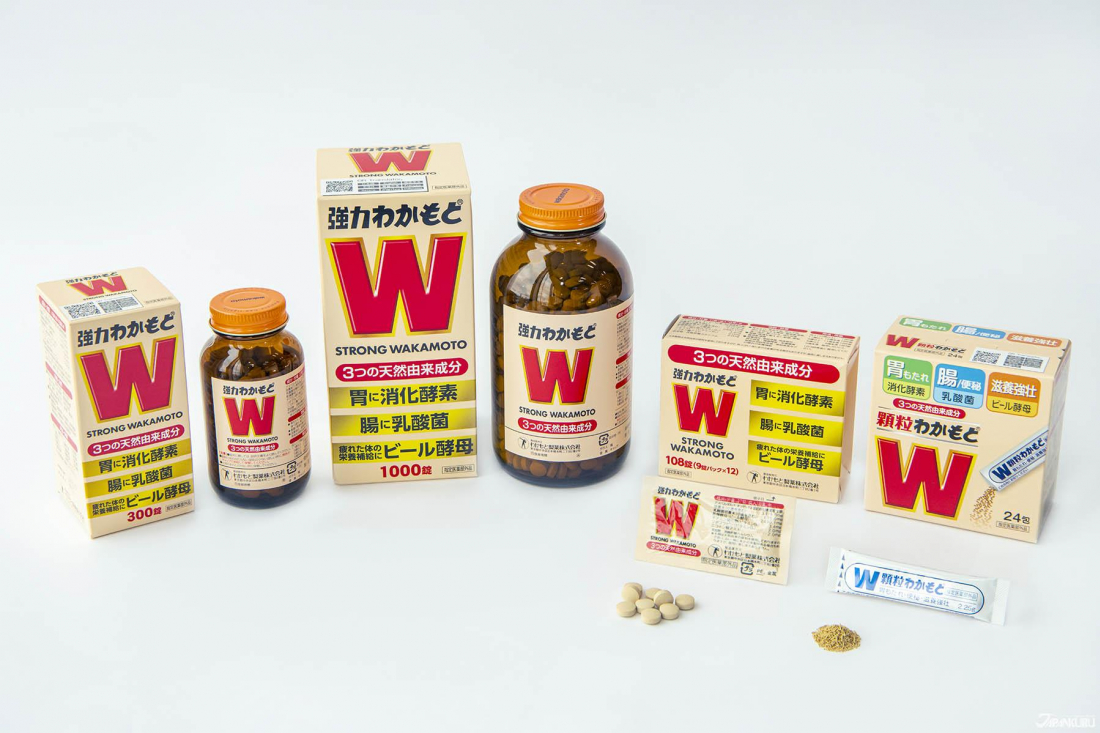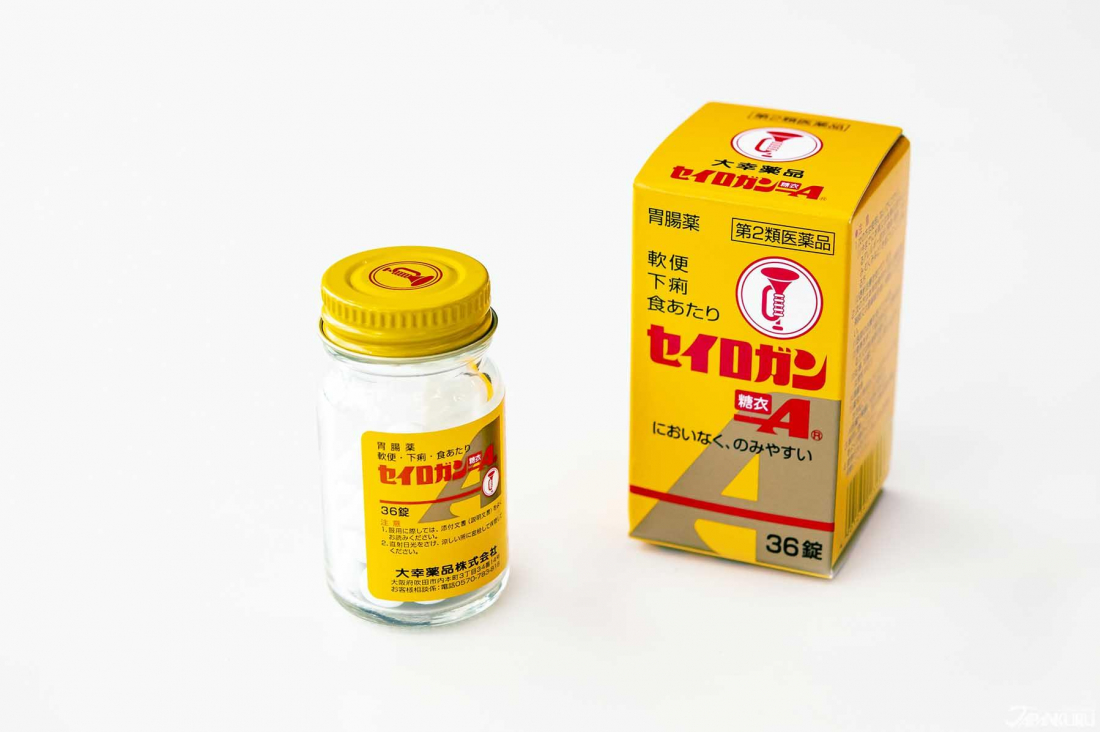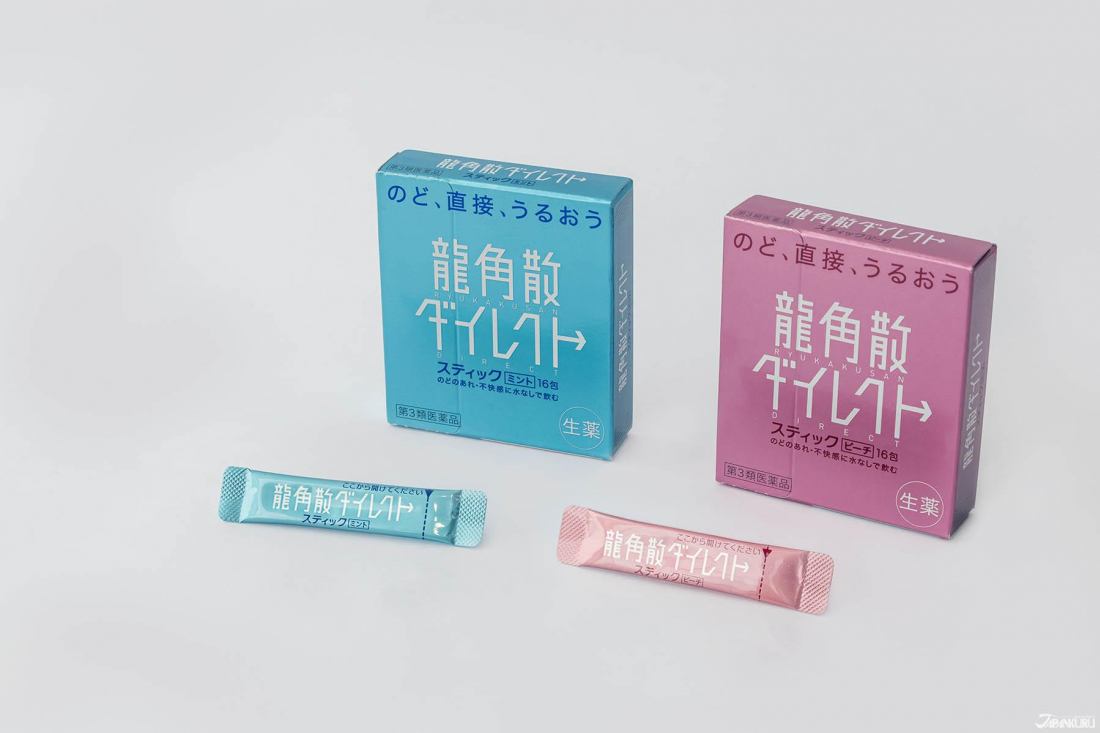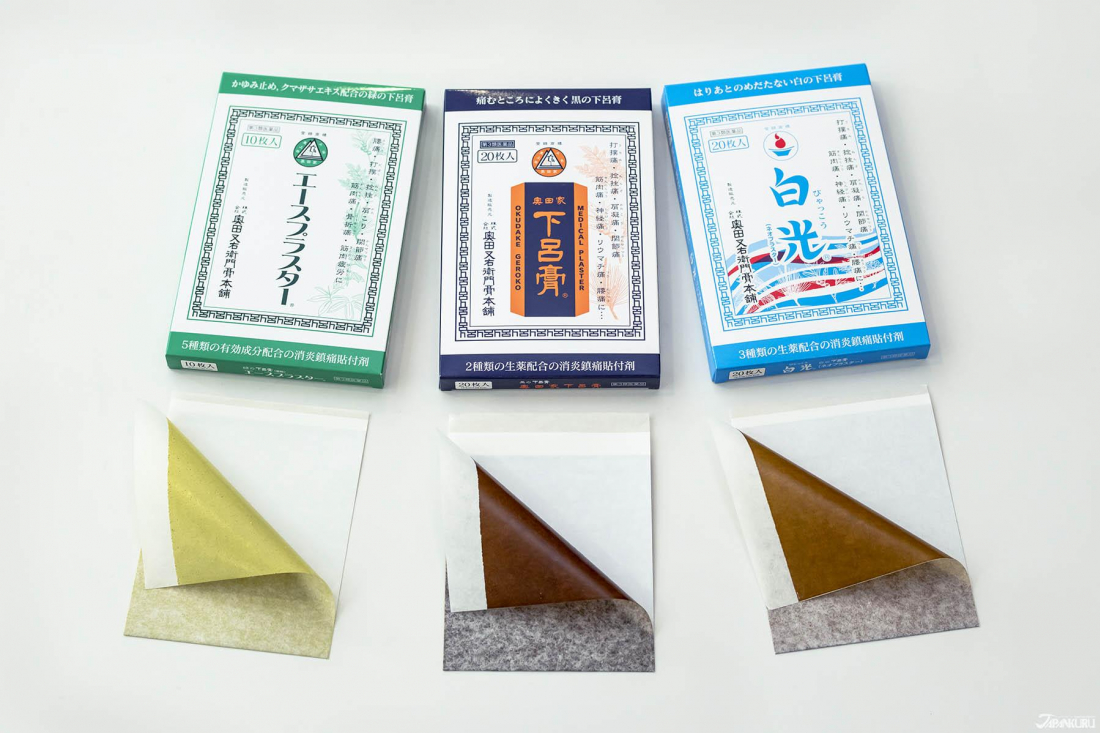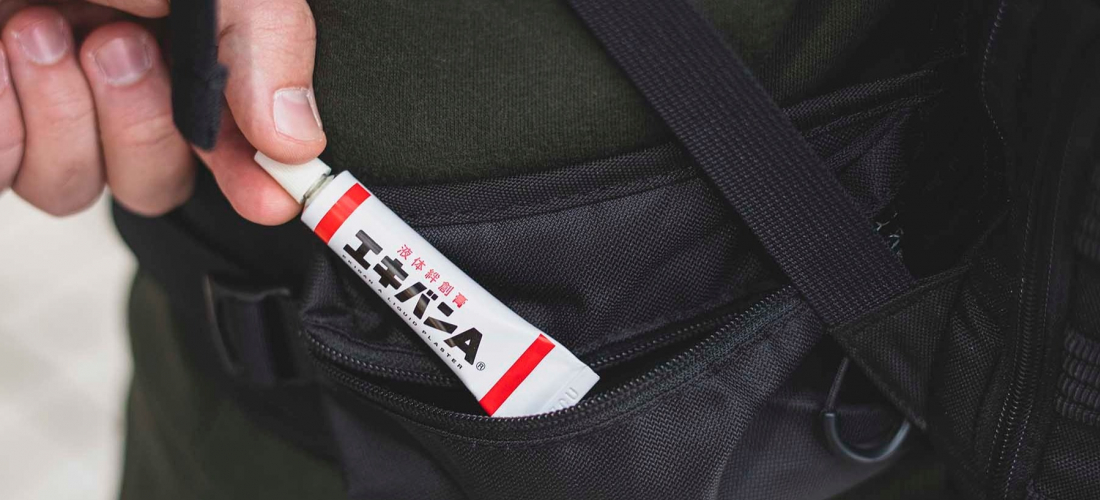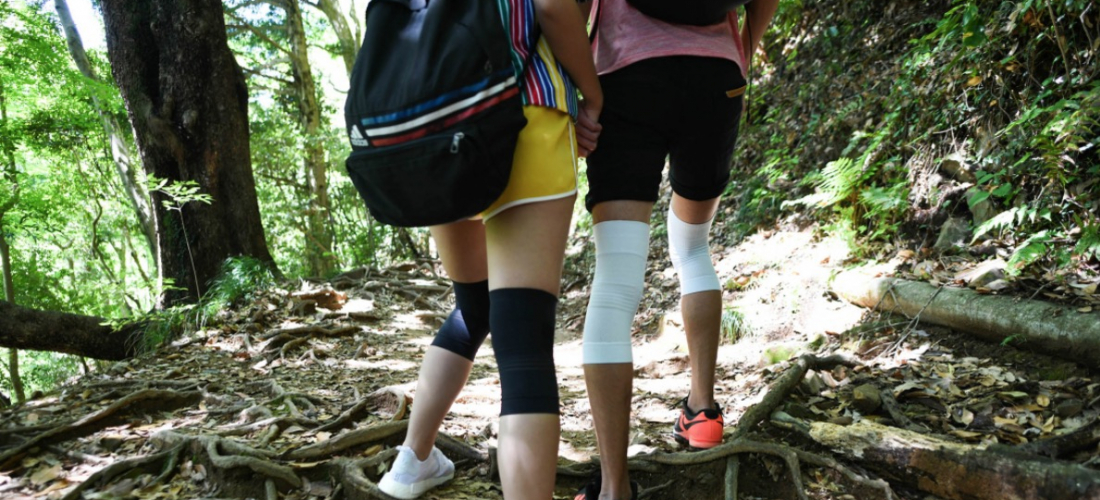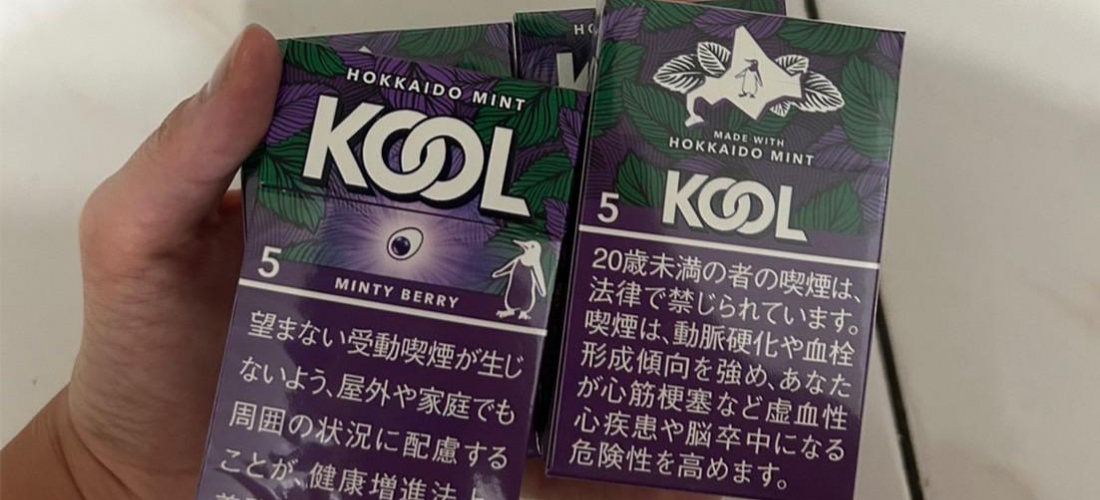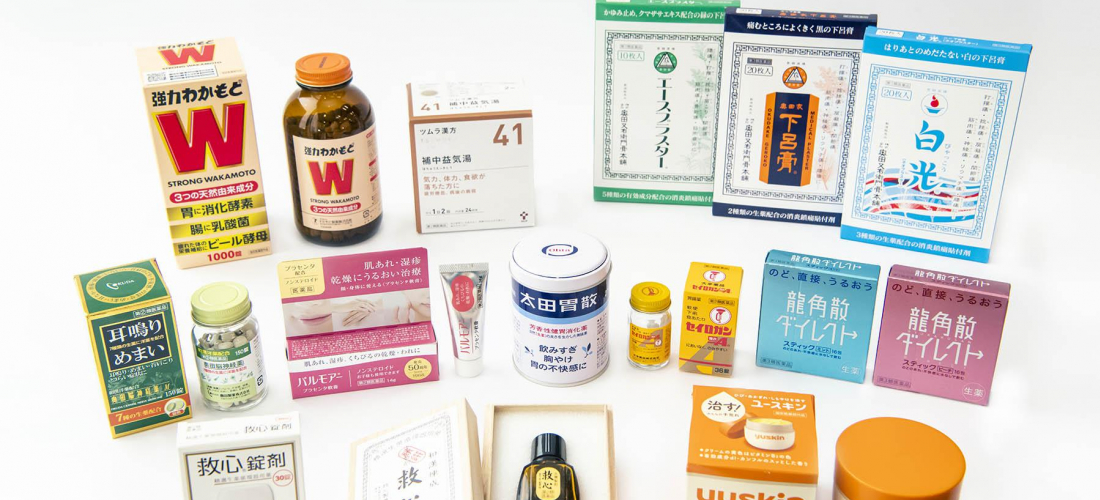
CONTENTS
Introducing the items found in every Japanese medicine cabinet. Eleven long-established products that Japanese households keep on-hand―and popular Japanese drugstore souvenirs!
Eleven products for different every-day concerns―these are all long-established favorites, found in medicine cabinets around Japan. These pills, powders, first-aid items and other healthcare products are all easily available at drugstores, so picking a few up of them might just give you some especially unique souvenirs from Japan. (Of course, if something calls out to you, and you can't wait until your next visit to Japan, you can buy most of them online, too!)
1. Medicine to Keep Your Body in Balance & Relieve Fatigue
The small, easy-to-swallow pills are formulated to break down easily, and quickly absorb into the body. Kyushin is a medicine recommended for all kinds of situations: when climbing a long flight of stairs causes palpitations and shortness of breath; when you just can't seem to shake a bout of exhaustion from too much overtime at work; when a strenuous day of hiking or golfing in the hot sun has you zoning out and unable to concentrate; when the weather shifts and hot days or cold nights cause palpitations; when a long drive or plane flight leaves you feeling groggy; or even when menopause or a nervous system inbalance causes dizziness or palpitations.
Medical Classification: Schedule 2 (over the counter)
Pricing: 30 pills/2,200 yen | 60 pills/4,100 yen | 120 pills/7,600 yen | 310 pills/17,000 yen | 630 pills/31,000 yen
Effects/Benefits: Restorative properties, good for palpitations and shortness of breath.
Official Website (jp)
English Product Listing
Thanks to a film coating, the tablets don't have any of the strong odor or flavor often associated with Japan's natural remedies, and the lightweight plastic bottle is easy to keep on hand, so the medicine can be taken on the go. Stress, nervous system troubles, bad circulation, insufficient oxygen, a racing heart, shortness of breathーdoes one of the recommended uses for Kyushin Tablet seems right for you? For everyone just trying to tough it out, perhaps this is your opportunity to give Kyushin a try instead. The medicine's effects look like they could definitely come in handy when it comes to the discomfort that many travelers encounter, so if you're interested, why not pick up a bottle to try for yourself when you get to Japan? They even recently released an extra-large bottle of 60 tablets!
Medical Classification: Schedule 2 (over the counter)
Pricing: 9 tablets/1,400 yen | 30 tablets/4,100 yen | 60 tablets/7,600 yen
Effects/Benefits: Restorative properties, good for palpitations and shortness of breath.
Official Website (jp)
English Product Listing
Stress is lurking behind every corner these days, whether it comes from looking for a job, searching for (or losing) love, or even from tragedy: an accident, injury, or natural disaster. For plenty of people, this unavoidable stress takes a toll on the nervous system, throwing the body out of balance and causing symptoms like chronic headaches or ringing in the ears, casting a shadow over ever day. How are you feeling these days? How about your friends and family? Okuda Cranial Nerve Medicine is an easy to swallow sedative tablet, that can help relieve symptoms of stress and exhaustion. They say it's even good for your everyday stiff neck, so why not give it a try and see how it works for you?
Medical Classification: Schedule 2 (over the counter)
Pricing: 70 tablets/2,458 yen | 150 tablets/4,743 yen | 340 tablets/9,000 yen
Effects/Benefits: Good for ringing ears, dizziness, stiff neck and shoulders, irritation, headaches, heavy-headedness, hot flashes, and anxiety.
Official Website (jp)
English Product Listing
With its roots in Chinese medical tradition, this kampo is made to tackle "qi xu" (気虚), quite literally the lack of "qi" or chi (気) that is the energy at the root of life in traditional Chinese medicine. By helping the stomach and intestinal tract with the process of digestion and nutrient absorption, they say this medicine helps your body produce the chi that builds a strong body. On top of that, it has been seen to help with the loss of appetite that can come from intense summer heat―especially relevant during this season. There are plenty of people who suffer from both that loss of appetite and the fatigue that comes from the extremes of air conditioning, so if that sounds familiar to you, this might just be a good option to try out! This kampo medicine contains ten different natural remedies, including ginseng, Mongolian milkvetch, and Atractylodes lancea (a source of "cāng zhú" in Chinese herbal medicine), so give it a try if it's piqued your interest!
Medical Classification: Schedule 2 (over the counter)
Pricing: 10 packets (5 days)/1,800 yen | 48 packets (24 days)/4,300 yen
Effects/Benefits: Good for a weak constitution, fatigue/malaise, post-illness weakness, loss of appetite, night sweats, and the common cold.
Official Website (jp)
English Product Listing
2. Medicine for Your Stomach
Aside from the standard Ohta Isan antacid, they make a few other products for more specific stomach troubles. Ohta Isan A is recommended for discomfort after a particularly greasy meal. Ohta Isan Seichoyaku (AKA "Ohta Isan Drug for Controlling Intestinal Function") helps when your stomach and intestines just feel out of order, and can improve digestional problems like constipation or diarrhea. Ohta Kampo Ichoyaku Ⅱ(AKA "Ohta Chinese Herbal Gastrointestinal Medicine Ⅱ") is specially made for those who suffer from stress-related stomach problems, or anyone whose stomach troubles just never seem to disappear. All of their products can be found in just about any drug store, so keep an eye out!
(Read more about all of Ohta Isan's products here.)
Medical Classification: Schedule 2 (over the counter)
Pricing:
Cans – 75g/680 yen | 140g/1,200 yen | 210g/1,680 yen
Individual Packets – 16 count/590 yen | 32 count/1,120 yen | 48 count/1,580 yen
Effects/Benefits: Good for heartburn, stomach discomfort and pain, indigestion, overeating, loss of appetite, bloating, nausea, and the discomfort that comes from heavy drinking
Official Website (jp)
English Product Listing
Using a formula made with an exclusive strain of aspergillus oryzae NK yeast to produce digestive enzymes, powdered lactobacillus culture to regulate the intestines, and brewers yeast packed full of the vitamins, minerals, and amino acids necessary for life, Strong Wakamoto takes the power of three naturally-sourced components and uses them to bring the digestive system back to normalcy and give the body energy. They say that on top of helping with stomach discomfort, indigestion, loss of appetite, and other common problems, it can also help with constipation and nutritional support by improving the stomach's general condition. Strong Wakamoto is sold in pill form and powder form, and the easy-to-take powder is only available in Japan! Do you know someone who might like this exclusive product as a souvenir?
Medical Classification: Designated Quasi-Drug
Pricing: 1,000 pills/2,500 yen | 300 pills/1,000 yen | 108 pills/500 yen | 24 packets/950 yen
Effects/Benefits: Good for stomach or abdominal discomfort, discomfort due to overeating, constipation or loose stool, heartburn, bloating, a weak constitution and those who are easily tired. Also for those considering nutritional supplementation during or after illness, pregnancy, or childbirth.
Official Website (jp)
English Product Listing
On top of treating diarrhea that comes from eating or drinking too much, or even stress or cold weather, it can actually be quite helpful for issues that stem from a virus- or bacteria-based stomach bug! Most so-called "antidiarrheals" just about bring the intestinal system to a halt, so they're not recommended for issues caused by viruses or bacteria. But many say that Seirogan Toi-A gives them peace of mind, because it takes on your overactive intestines and returns them to their normal state. Anyone suffering from diarrhea is going to want to get over it as quickly as possible, so if you're reading this and thinking Seirogan might just come in handy, perhaps you'll want to pick up a bottle to have around the house. Seirogan Toi-A is easy to take and doesn't have any unpleasant odors, so it's handy to have with you in class or at the office, as well.
Medical Classification: Schedule 2 (over the counter)
Pricing: 36 pills | 84 pills (open pricing)
Effects/Benefits: Good for diarrhea or loose stool, vomiting, and food poisoning.
Official Website (jp)
English Product Listing
3. Creams and Ointments for Dry, Cracked Skin
The ointment has a broad range of uses, including just about any time the skin needs a little extra care, and even dry or cracked lips. Palmore especially popular thanks to its year-round convenience. It's easy for skincare to slip your mind in the hot summer months, but you can keep a tube of Palmore on hand for skin dried by air conditioning and burned by the sun. When the cold weather rolls around, Palmore is of course useful for keeping skin moisturized and rejuvinated through Japan's dry winters. There are more than a few women in Japan who keep a little tube of Palmore tucked away in their purse throughout the year, as a convenient answer to all sorts of skin-related worries. You'll find the cute pink packaging on the web and in drugstores around Japan!
Medical Classification: Schedule 2 (over the counter)
Pricing: 7g/1,100 yen | 14g/1,900 yen
Effects/Benefits: Good for rough, dry hands, seborrheic dermatitis, eczema, pityriasis rosea, sunburn, chapped lips, acne, rosacea, dry cracked skin, and general skin care.
Official Website (jp)
A Japanese standby, "Yuskin A" is changing its name and packaging. But even once it becomes the new "Yuskin", this yellow cream will keep the same popular formula, featuring vitamin B2 (riboflavin). Yuskin actually works to treat dry, cracked skin using a combination of four active ingredients, and the real benefit to using Yuskin is that it doesn't just moisturize skin―they say "the cream really heals rough, chapped skin." To make sure your skin stays nice and soft, moisturizing ingredients like glycerin, hyaluronic acid, and vitamin C are also added to the mix. From the moment it hits the skin, Yuskin promotes moisture and protects. If you like the way it feels, you can use it from head to toe! Yuskin recommends thoroughly massaging the cream into the skin before bed every night, to wake up each morning with velvety smooth skin.
Yuskin was created in response to the unanswered pleas of the many housewives whose housework was giving them dry, iritated skin, and the cream has proudly remained a popular choice ever since. It's not uncommon to see a bottle of Yuskin kept around the house, ready for use on the whole family's dry skin. It's easy to find in drugstores and online, so it's worth a try (and it's not a bad souvenir, either)!
Medical Classification: Designated Quasi-Drug
Pricing: 40g tube/530 yen | 80g tube/890 yen | 120g tub/1,240 yen | 180g pump bottle/open pricing | 180g refill pouch/open pricing
Effects/Benefits: Good for rough, dry skin, and chilblains.
Official Website (jp)
4. Other Medicine Cabinet Staples
The "Stick" variety of Ryukakusan Direct comes in packets of fine powder, taken without water, which quickly melt right onto the throat "just like soft snow flakes," as they put it. It's helpful for when your throat starts to bother you, when you start to develop a cough, or even when you've just overused your voice, so of course they recommend you always carry a packet with you. The little packets are in convenient one-dose portions, making them easy to take with you when you leave the house (or when you travel). Taking care of your throat health is an important step towards preventing viruses! Ryukakusan Direct Stick comes in two flavors, mint and peach, and they each have the same medicinal effects, so you can always try whichever flavor sounds good to you at the moment.
Medical Classification: Schedule 3 (over the counter)
Pricing: 16 packets/700 yen
Effects/Benefits: Good for cough, excess phlegm, a sore throat, hoarse voice, and problems that come with throat irritation.
Official Website (jp)
English Product Listing
Coloskin has quite a few uses. For outdoorsy types out there, it's handy for little cuts and scrapes on a hike, or even when your shoes rub a little too much. For anyone who likes to go fishing, or even clamming, Coloskin can protect little wounds from the painful sting of saltwater. Coloskin is a constant companion for households that love sports or travel, or anyone that might find themselves hurt while doing farmwork and other outside labor, especially since the formula is strong against water. The flexible formula makes this liquid bandage work great on joints big and small, and once dried, the bandage stays strong against water and detergents, keeping wounds clean and hygeinic. Since it has so many uses, you can imagine having one for home, one for work, tubes to keep in your bag and tubes just for the kids. If you think you might need a handful, they do sell 2-packs of mini tubes as well!
Medical Classification: Schedule 3 (over the counter)
Pricing: 11ml/880 yen | Mini Tubes (5ml x 2)/1,200 yen
Effects/Benefits: Minor cuts, scratches, and scrapes, hangnails, chapped skin.
Official Website (jp)
English Product Listing
If you're planning on picking up some Okudake Geroko, they recommend not only buying it at the local drugstore, but also making your way over to Gero Onsen itself! The company's original specialty store still maintains its 150-year-old facade and a collection of old historical documents. Making your way to Gero Onsen, enjoying the hot springs, and stopping by to pick up some medicinal plasters at the original Okuda Mataemon-ko specialty shop―the whole experience makes for a story to bring home with you, too!
Medical Classification: Schedule 3 (over the counter)
Pricing:
Green ("Ace Plaster") – 10 sheets/1,600 yen
Black & White ("Geroko" & "Byakko") – 10 sheets/1,300 yen | 20 sheets/2,500 yen
Effects/Benefits: Good for bruises, sprains, stiff muscles and joints, sore muscles and nerve pain, and rheumatism.
Official Website (jp)
Found something you're interested in? Still mulling over your options? Take this chance to do a little window shopping, and figure out just which products you'll want to add to your household first-aid kit! (Perhaps it's time to put together a Japanese drugstore shopping list?) For more updates and info from Japan, don't forget to follow Japankuru on twitter, instagram, and facebook!
Details
NAME:Household Medicine
PROFILE
Follow us @Japankuru on Facebook, Instagram, and Twitter!
COMMENT
FEATURED MEDIA
VIEW MORE
Which snacks make the best Japanese souvenirs?~ Jaga Pirika ~ 일본과자 선물 뭐하지?~자가피리카 편~ #pr #calbee #jagapokkuru #japanesesnacks #japanesefood #japanesesouvenir #japantravel #japantrip #naritaairport #hokkaido #나리타국제공항 #일본여행선물 #흔하지않은기념품 #일본쇼핑리스트 #일본과자추천 #고구마과자 #일본간식추천 #일본면세점쇼핑 #개별포장 #일본감자칩 #도쿄나리타공항면세점 #현지인추천 #일본여행 #일본기념품리스트 #자가포쿠루 #자가피리카

Asakusa's Sanja Matsuri, one of the biggest festivals in all of Tokyo, is almost here! Make sure you check out the festival route so you don't miss all the festivities this May. #asakusa #sanjafestival #sanjamatsuri #asakusashrine #sensoji #sensojitemple #japanesefestival #shintoshrine #japaneseculture #tokyo #tokyotrip #tokyotravel #asakusasightseeing #matsuri #japantrip #japantravel #springinjapan #tokyotravel #japankuru #산자마츠리 #아사쿠사 #일본마츠리 #일본여행 #일본5월

Odaiba's DiverCity Tokyo Plaza is home to the famous real-size 20m-tall Unicorn Gundam, and the popular shopping center has even more Gundam on the inside! Check out the Gundam Base Tokyo on the 7th floor for shelves upon shelves of Gunpla, and the Gundam Base Tokyo Annex on the 2nd floor for cool anime merchandise. Both shops have tons of limited-edition items! #pr #odaiba #tokyo #tokyotrip #japantrip #japantravel #PR #divercity #divercitytokyoplaza #tokyoshopping #gundam #unicorngundam #gundambasetokyo #anime #otaku #gunpla #japankuru #오다이바 #다이바시티도쿄 #오다이바건담 #건담 #일본건담 #건프라 #건담베이스도쿄

Evangelion, in miniature!? Tokyo's SMALL WORLDS Miniature Museum is actually a must-see for anime lovers, thanks to the tiny Evangelion Hangar and Tokyo-III... plus a whole universe of other scenes both real and fictional. #smallworlds #smallworldstokyo #tokyotrip #tokyotravel #evangelion #eva #anime #miniature #miniatures #animefigure #japantrip #japantravel #에반게리온 #스몰월드 #에반겔리온 #スモールワールズ #오다이바 #아리아케

Have you sat down for a snack at Sumida Aquarium yet? This aquarium next to Tokyo Skytree is known for its penguins and garden eels, but we can't get enough of their cute snacks! There are lots of good seats around the aquarium, too, so it almost feels like one big cafe. 🐧 • Find out more at Japankuru.com! (Link in bio.) • #japankuru #sumidaaquarium #skytree #tokyoskytree #solamachi #sumida #tokyo #tokyotrip #tokyotravel #aquarium #japanesesweets #themecafe #すみだ水族館 #Japan #日本 #일본 #Japon #ญี่ปุ่น #Japão #япония #japantravel #日本旅行 #日本旅遊 #japan_of_insta #japantrip #traveljapan #japan🇯🇵 #igerstokyo #explorejapan

For anime fans, the Evangelion areas at Small Worlds Miniature Museum are a must see! The tiny miniature people in the Evangelion Hangar look like ants beneath the moving Unit-01, Unit-00, and Unit-02! And over in Tokyo-III, characters like Shinji, Rei, and Katsuragi live life on a miniature scale. #odaiba #tokyo #tokyotrip #japantrip #japantravel #ariake #smallworlds #miniaturemuseum #smallworldstokyo #tokyotravel #evangelion #eva #anime #miniature #miniatures #animefigure #japankuru #스몰월드 #에반게리온 #오다이바 #오다이바관광 #오다이바스몰월드 #미니어쳐

